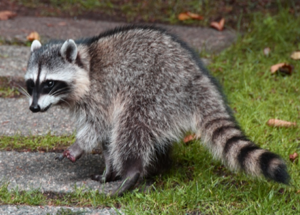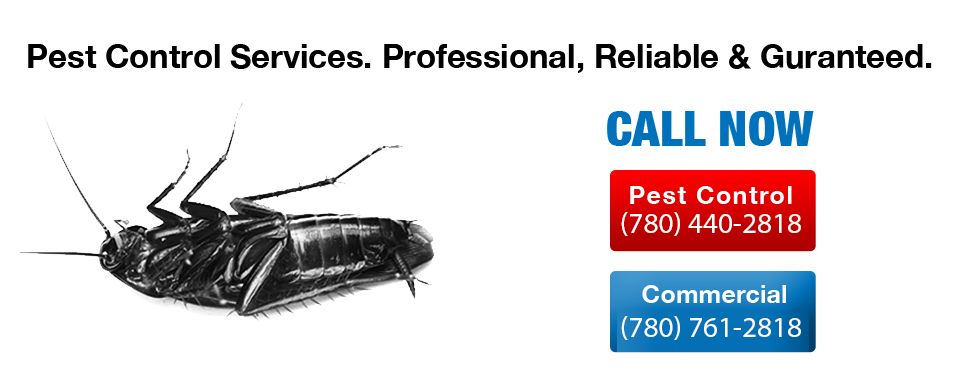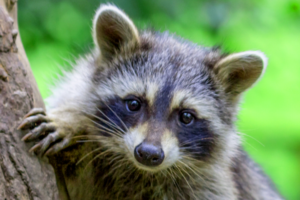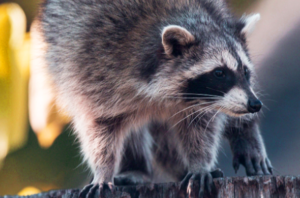Raccoon Removal Services
For raccoon removal services call: (780) 440-2818
Raccoon removal Edmonton. Technicians specializing in the humane removal of nuance raccoons. Raccoons are responsible for year-round property damage and disturbances across the GTA. Our raccoon control experts use live traps or snare poles to remove raccoons and seal all entry points to make sure you are not ever disturbed by raccoons again. For raccoon removal and control services in Edmonton call: (780) 440-2818
We service the Greater Edmonton Area including Edmonton, Stony Plain, Beaumont, Spruce Grove, St. Albert, Leduc, Sherwood Park and Nisku.
Raccoon Removal
Our technicians use only humane and effective techniques to remove nuisance raccoons. We take extra care to make sure that all raccoons are removed in a way that does not harm the animals, is done so that property is secured and disinfected and finally we take extra precautions and measures to be certain that raccoons will not enter your home again. If you are experiencing issues with a raccoon have a professional conduct the removal for both the animals safety and your own. Call us today if raccoons are causing damage to your property or keeping you up at night.
Raccoon Control
Raccoons can be successfully removed using a variety of traps. Mesh traps are used to capture raccoons alive. When using such traps, they need to be secured to the ground to prevent the trap from rolling over causing distress to the animal or allowing it to escape by opening the trap door. There are different types of baits that can be appealing to raccoons, including sardines, fresh fish, cat food and more. Trapping the animals is only the first step to raccoon control. Making sure that the raccoons cannot get back into an attic, a basement or a garage is what is referred to as exclusion. Every raccoon control situation is different, and requires careful examination of the situation to determine the entry points and locate the nesting location or den.
In the case that we are dealing with a raccoon mother and a litter, we remove the raccoon from the attic, deck or shed, then relocate the pups out and place them safely in an area where the mother can find them and relocate them. This ensures that no harm comes to the animal and the problem is solved in a humane manner. Once all animals are removed, we proceed with cleaning and sealing all entry points.
Deterring Raccoons
Raccoons are attracted by food. In most cases the presence of easily accessible garbage, compost and pet food is what brings raccoons to investigate in the first place. To keep raccoons at bay it is important to take the necessary steps to limit the availability and accessibility of such items. Pet dishes or uneaten pet food outside is an open invitation to raccoons. Raccoons can feed off both dog and cat food so if you do have a pet try to keep the feeding areas clean all the time. You can even avoid feed pets excess food that they might not finish and leave.
Garbage cans and compost receptacles ought to be fitted with tight-fitting lids so that raccoons cant open them. It is also a good idea to secure garbage bins upright so that raccoons can not tip them over. Remember, they are clever and agile creatures so it is best to take the necessary precautions rather than deal with the problem after it happens.
Raccoon Repellents
There are various repellents you can use for raccoons. Some repellents that are known to work to some extent are ammonia, monthballs and noise. You can use ammonia-soaked rags near the areas where you have seen the animals resting. You can also place mothballs or moth crystals in or near their den. Raccoons are intimidated by loud noises, so placing a radio in the vicinity of their den is known to cause discomfort.
You can also spray cayenne pepper solution or ammonia on your bins to help deter any raccoon that might try to gain access. To make sure you limit their access to den sites, remove rock and woodpiles from the yard, close off entry under sheds, outbuildings, porches and the garage. If you have fruit trees or vegetable plants, make sure you harvest gardens and pick up fallen fruit often.
These types of repellents can work but their success rates are very low. There are other repellents, such coyote urine, that can be purchased that work better.
Raccoon Exclusion
Raccoons only need a 4 inch diameter hole to enter a structure. So you need to make sure that there aren’t any open and inviting holes in the roof, siding or walls. To prevent access one also needs to secure all chimneys with chimney caps and secure all vents with stainless steel screens over them.
We use one way doors to allow raccoons exit but not permit re-entry.
We use one way doors, to permit the animal to exit but not be able to enter. Remove all tree branches around your house as they are preferred by raccoons when trying to gain access to buildings and structures.
If you too are experiencing problems with raccoons: call us for removal, exclusion and control: (780) 440-2818
Raccoons (Procyon lotor)
Edmonton is considered the raccoon capital of the world. With a healthy population of raccoons it is very common for homeowners across the city to have issues with raccoon families moving in.
 Raccoons have adapted very well to the urban setting and their populations continue to grow day by day. Urban raccoon populations doubled several times in the past few decades as city raccoons live longer and breed more successfully. Raccoons are native to North America forested areas and now to north American cities. They are considered to be smart animals, living in families and show gender specific behavior.
Raccoons have adapted very well to the urban setting and their populations continue to grow day by day. Urban raccoon populations doubled several times in the past few decades as city raccoons live longer and breed more successfully. Raccoons are native to North America forested areas and now to north American cities. They are considered to be smart animals, living in families and show gender specific behavior.
Characteristics
Raccoons can be quickly recognized by the black coloured fur they have around their white face. Their size can range depending on habitat and living conditions. They can be anywhere between 2 to 14 kilograms with a common average weight of 3.5 and 9 kilograms. They are primarily nocturnal foraging for a varied types of foods at night. They do so in a relatively smaller areas compared to other animals. The operating range of the urban raccoon is limited from 3 to 8 hectares. Though mostly active at night, raccoons can sometimes seen during the day when food sources are ample. Typical litter sizes are between two to five young. Mating occurs during the times of the year with increased daylight and mostly between February and March. In cities, raccoon populations can be much larger than in the wild. In certain parts of Edmonton there are reported raccoon densities of as high as 100 animals per square kilometer. Most raccoons den in dark quiet areas close to a food source. In cities like Edmonton prime raccoon den areas are hollow trees, attics, sheds, garages, chimneys, woodpiles and under decks. If you have a raccoon living in your property, chances are it is a female. It is mostly females that create dens most of them created during the summer months.
As Pests
Raccoons can be the source of much annoyance to homeowners. In their search for food they can tip of garbage containers or even dig up gardens. Their agile paws allows them to open containers with ease in search for scraps. They are active at night so if they are active in close proximity to a home they can keep up residents up at night. Raccoons can cause serious property damage that can lead to substantial repair costs. They are known to rip shingles and roof siding to reach attics. They often seek to enter houses and buildings through foods and attics as they offer attractive den locations. Chimneys are an additional possible entry point for raccoons. A common complication with raccoon removal is the existence of babies. Raccoon mothers can be very persistent in re-entering to gather their litter. If the litter is not also removed it is likely that more damage will occur by the mother. In the case that there is a need to be in contact or in close proximity with a raccoon there is a need to take protective precautions by wearing a HEPA filter mask and gloves. Raccoons carry a multitude of pathogens and are known to carry rabies.
Dangers
Raccoons can carry a variety of pathogens as well as the rabies virus. Rabies, while treatable, can be lethal to humans. Cases of transmission from raccoons occur through bites and scratches as it is transmitted through the animals saliva. Raccoons that are affected by the virus show distinct symptoms such as aggressiveness and or impaired mobility. In addition to rabies, a common pest that raccoons carry is the roundworm. Roundworms are primarily found in raccoon feces. Human contact to roundworm larvae can cause illness to humans when inadvertently inhaled or ingested.
Raccoon Control Edmonton
Raccoon control is performed in a variety of ways but primarily with the humane use of trapping. Raccoon removal professionals use baited traps to capture and relocated the animals. Removal can become more complicated if raccoons have found shelter in an attic. Extra care should be taken when there is a raccoon litter involved. Due to the potential harmful effects of an interaction with raccoons and to avoid hurting the animals it is best to have a professional wildlife technician, or a licensed trapper to perform the raccoon removal. For Raccoon Removal Edmonton call: (780) 440-2818




